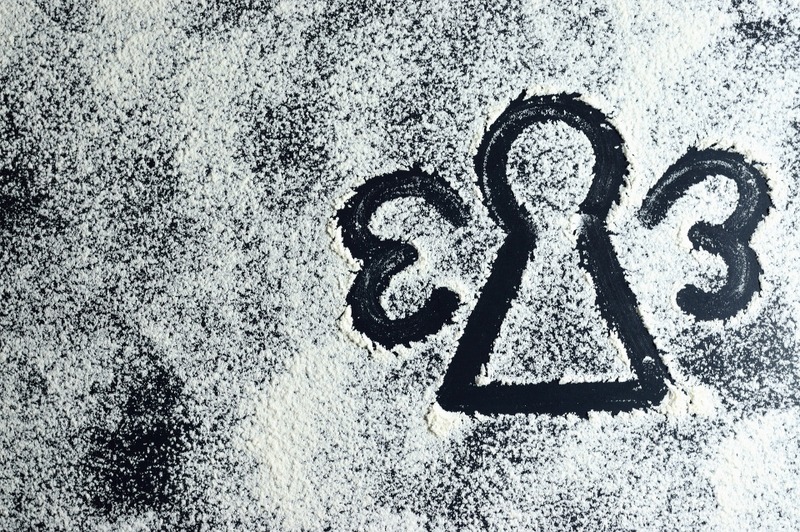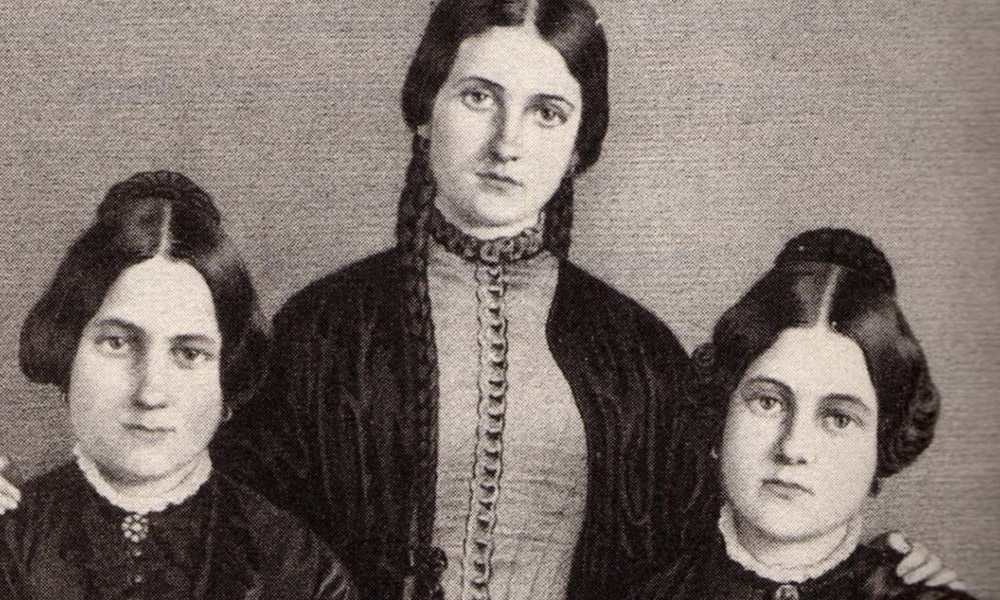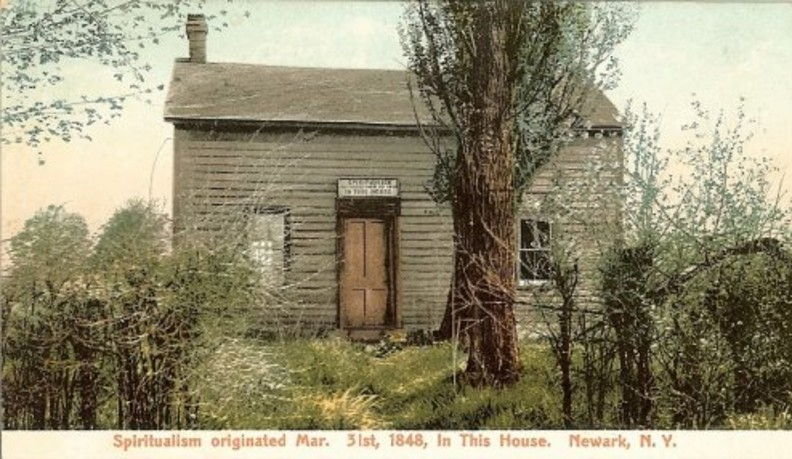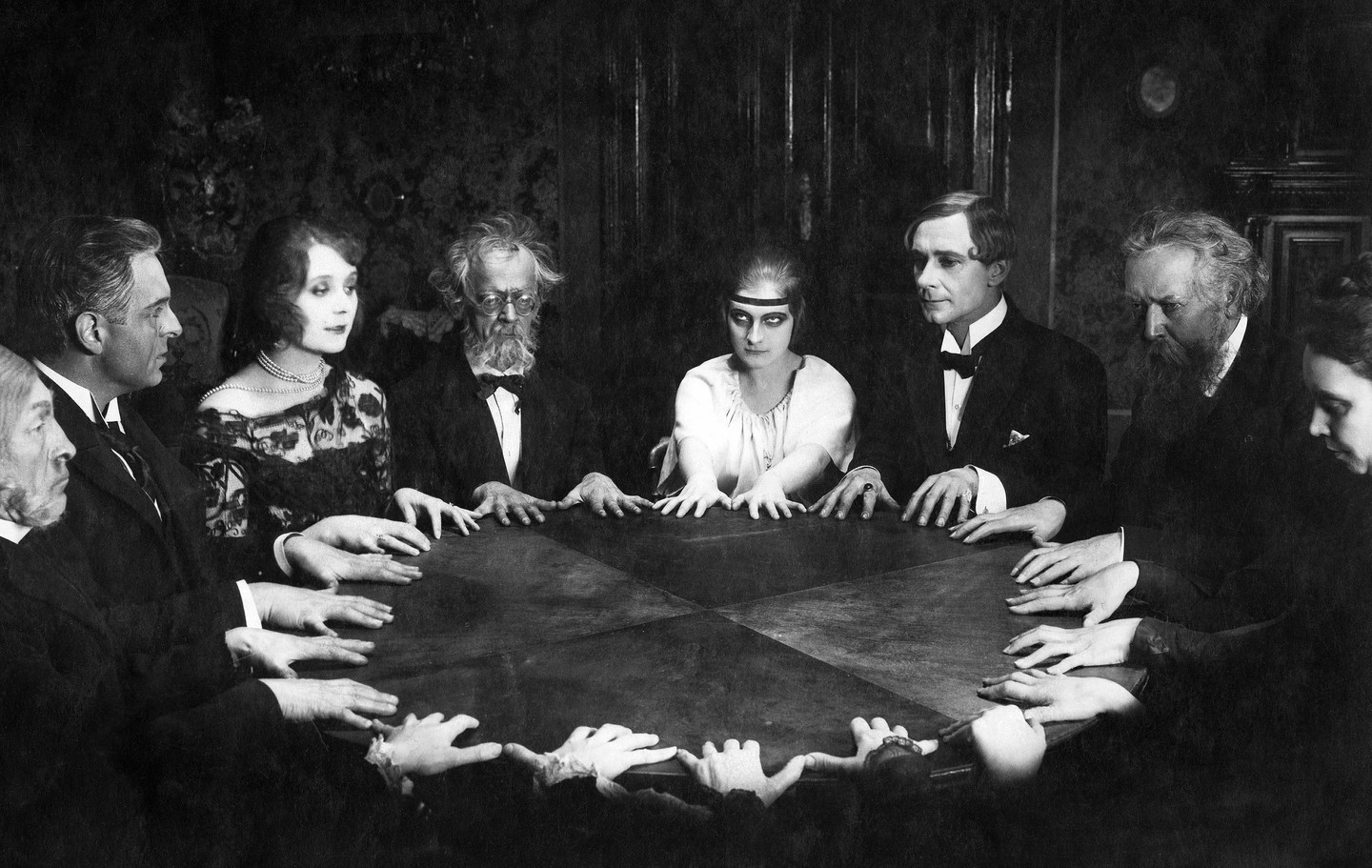The history of spiritualism
For centuries, people have been trying to get in touch with spirits. But what do we actually know about the history of spiritism? Where and when did it originate? Communicating with the dead has its origins in Greece, around 540 BC. So for over two and a half thousand years, humans have been trying to contact the dead!
In ancient Greece, people held séances in which all kinds of signs were written on a stone slab. On this stone plate there was a table on wheels that moved from sign to sign, just like the planchette of the Ouija plate we know today. It is not known whether the Greek 'sitters' also placed their fingers on the moving table (as we do on a glass or planchette) or whether it moved by itself.
This 'stone slab method' was an initiative of Pythagoras, who, incidentally, had not invented it himself, but had been inspired to do so during one of his trips to the Far East. So the true origin of 'summoning spirits' in this way will always remain shrouded in mystery, although there are indications that communicating with the dead in this way originated in China.
China
In the early 1800s, many Chinese were already engaging in spirit summoning - just at home and with the children. One does not know how long this ritual has been part of Chinese culture, but the procedure went as follows.
A smooth table or floor was dusted with flour. Then two people sat facing each other on the flour-sprinkled surface. Between them they held a wicker basket to which a chopstick was attached.
The tip of this stick stuck down into the flour. After the two 'sitters' invoked the spirits, the wicker basket began to move, causing the stick attached to it to write messages or make marks in the flour.
Christianity
Unlike in China, the riding table on the stone plateau in Greece was by no means for everyone. Only very high-ranking people were invited to participate in such séances. Indeed; 'ordinary' people were not even aware of the existence of the riding table!
Only philosophers and priests had the privilege of working with it. Until the rise of Christianity in Europe. Then contacting the deceased became strictly forbidden. For everyone. It was something diabolical. And thus out.
When the power of Christianity waned and scientists gained the upper hand, this did not help spirit summoning either. These activities were dismissed by science as superstition and nonsense, so the rulers of Europe took it out of their heads to further engage in them. After all, no one wanted to be labelled a superstitious person; this designation would immediately lower his status.
In Greece, therefore, communicating with spirits was immediately stopped for this reason. So even though the idea of "summoning spirits" seems to have originated in China and Greece, we do not know for sure.
Mr Splitfoot
Speaking to spirits on a grander scale once began in Hydesville, America, in 1848 when three sisters (Margareth, Lea and Kate Fox) led their parents and local residents to believe that they had contact with a spirit in their home.
The two youngest sisters Margareth and Kate started this. After convincing their father, mother and older sister Lea that they really had contact with the beyond, Lea enlisted the neighbours to come and see and listen to the poltergeist.
Among other things, while communicating with the ghost, they made them tap their ages and figured out that tapping once meant "no", tapping twice meant "maybe" and tapping three times meant "yes". They also created a method of getting the mind to spell words by tapping until a letter in the alphabet was reached E.g. four taps: D, five taps: E.
The sisters called their poltergeist Mister Splitfoot, a nickname for the devil (because of his split hooves). When the neighbours came to take a look, they were almost convinced that someone in the house must have been murdered and that the victim's ghost had continued to haunt the house.
The happenings in and around the Fox family's home went from word of mouth, growing them into famous mediums who were asked to perform their paranormal skills everywhere within a span of two years.
Lea - who by now had set herself up as manager - arranged all kinds of séances, performances and other gatherings across the country for her paranormal sisters, with the result that many others suddenly also claimed to be able to communicate with spirits.
Everyone wanted to imitate them and also make money that way by organising séances. Consequently, the Fox sisters were leaders during the development of spiritualism.
Dancing tables
Spiritist churches and communities sprung up like mushrooms, and all kinds of new ways of contacting the dead emerged. One such method was to make tables dance. This involved all those present taking a seat around the table, resting their fingertips on the leaf.
Just as the Fox sisters made their minds beat until a certain letter in the alphabet was reached, other spiritualists recited the alphabet and made the table jump up and down the moment the right letter was reached. In this way, they could make the spirit spell out whole words and even sentences.
Because this method of working proved to be quite laborious, time-consuming (and often lengthy and therefore tedious), at one point a pencil was attached to one of the legs of the dancing table and a piece of paper placed underneath. In the hope that in this way the spirit could write messages via the table itself, but unfortunately this method too did not yield the desired results.
However, people did not give up and continued to invent and try out all kinds of methods to improve and simplify spirit communication. With the advent of the Ouija board seemed to have invented the egg of Columbus. Or...?
Read more in the book 'Glass spinning is not (un)dangerous. For online ordering click >HERE
You can order directly from the printer >HERE
Paranormal blog >HOME





